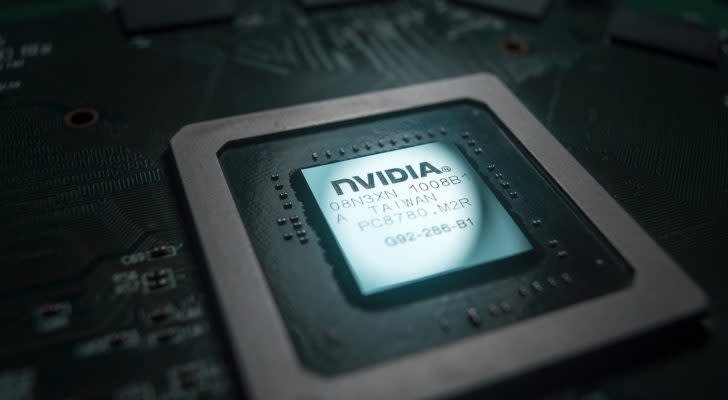How EBITDA Exposes Three Reasons to Like NVDA Stock
I decided to take a closer look at NVIDIA (NASDAQ:NVDA) because of its impressive EBITDA numbers. Typically, I don’t put too much importance on EBITDA, but I found that NVDA stock has a lot going for it beyond just this stat. In 2018, NVDA reported an impressive EBITDA of $4.11 billion. Meanwhile, the EBITDA margin was a healthy 35%.

Source: Shutterstock
You may be saying “That is just great, but what the heck are you talking about? What is EBITDA?”
You’ve probably heard the term EBITDA. It is a metric that is used by some investors to evaluate companies. It is commonly used by Private Equity firms when they look for target companies to buy. The term is an acronym for Earnings Before Interest, Taxes, Depreciation and Amortization.
InvestorPlace - Stock Market News, Stock Advice & Trading Tips
Understanding EBITDA
To understand EBITDA we need to understand what net income is. Net Income is simply the amount of sales a company makes minus the costs it incurs. When you hear an analyst talk about earnings per share, it is the net income divided by the number of shares. For example, if a company has a net income of $1 million and has one million shares outstanding it will report an earnings per share of $1.
The costs of a company include the cost of the goods that were sold and the selling, general, administrative, and operational costs associated with the sales. They also include the non-operational costs such as interest payments on the bonds the company has issued, the taxes it must pay, and the relevant depreciation and amortization costs. EBITDA can be thought of as net income without deducting the non-operating costs. This may sound complicated but it comes from a simple concept.
EBITDA became a popular measure in the 1980s when corporate raiding and hostile takeovers were common. This happens when the buyer — or raider — attempts to takeover a company without the approval of the management of said company by acquiring enough shares to gain control. It was typically done with borrowed money. EBITDA was a measure that was used to see if the cash flow that the target company generated would cover the interest costs of the money that was borrowed to buy it.
A good analogy for why these raiders cared about EBITDA is rental property. Suppose you buy a building and the rental income you make covers the cost of your expenses. Then, in theory, the investment will eventually pay for itself. This was the principle behind the hostile takeovers.
EBITDA should not be used in isolation, however, because this number can be very misleading. Non-operating costs are still costs and eventually they need to be paid. A company that is effectively bankrupt because it owes millions in taxes could have great EBITDA. As a matter of fact, like many other companies, NVDA doesn’t even report EBITDA in their financial statements.
How EBITDA Shows NVDA Stock Is a Good Buy
After initially being attracted to NVDA stock by it’s EBITDA, I found three more things to indicate future long-term profitability.
First, the operating margins have expanded. Operating margins aren’t the exact same thing as EBITDA, but they are linked. Operating margins are the amount of money a company makes for each dollar of sales expressed as a percentage. Over the past three years the margin has expanded from 22% to 37%. In other-words, the company was making 22 cents per dollar and now they are making 37 cents per dollar. This is very impressive growth.
The second thing that may be bullish for NVDA is the increasing amount of free cash flow that it has been generating. Cash flow is basicall earnings after Interest, Taxes, Depreciation and Amortization.This is the amount of cash that a company has after paying its bills. Like I mentioned earlier, looking at cash flow often exposes the issue with the EBITDA stat, but for NVDA stock, that’s not the case. In 2016, NVDA’s cash flow was $1.1 billion. By 2018, this number had increased to $2.9 billion. This is also an impressive growth rate, and it shows that EBITDA can be indicative of a strong, growing company.
The third aspect of NVDA that I find impressive is the growth in earnings per share. In 2018 they were $1.08, in 2017 they were $2.57, and 2018 they increased to $4.82. These three metrics suggest that NVDA may be a great long-term investment
At the time of this writing Mark Putrino did not hold any positions in the aforementioned securities.
More From InvestorPlace
The post How EBITDA Exposes Three Reasons to Like NVDA Stock appeared first on InvestorPlace.
